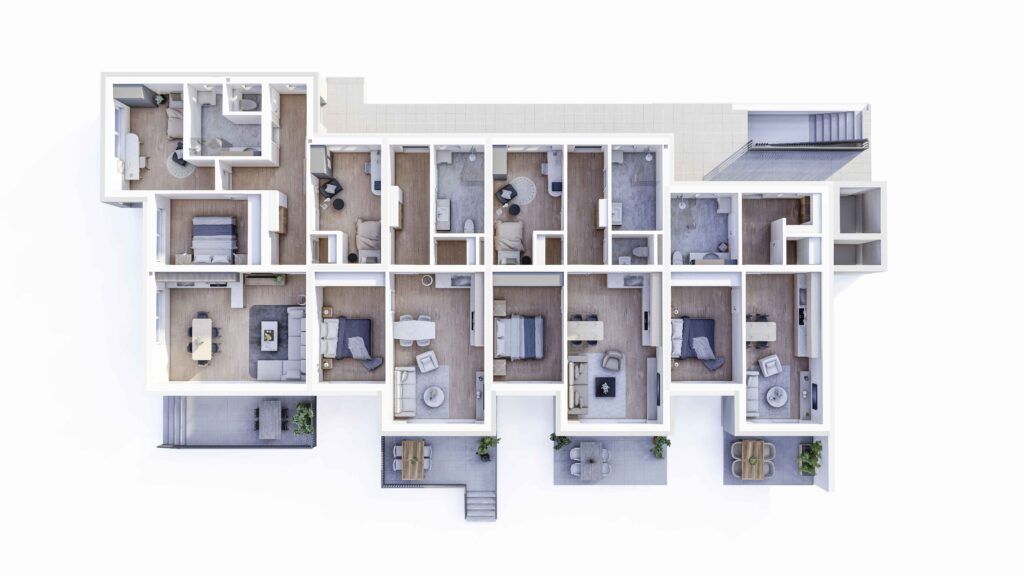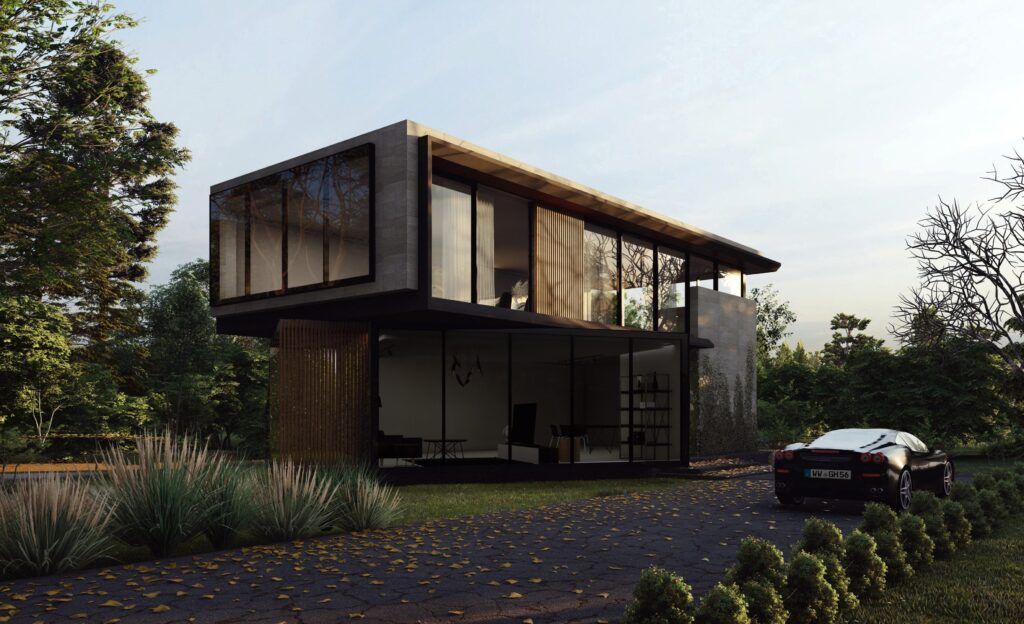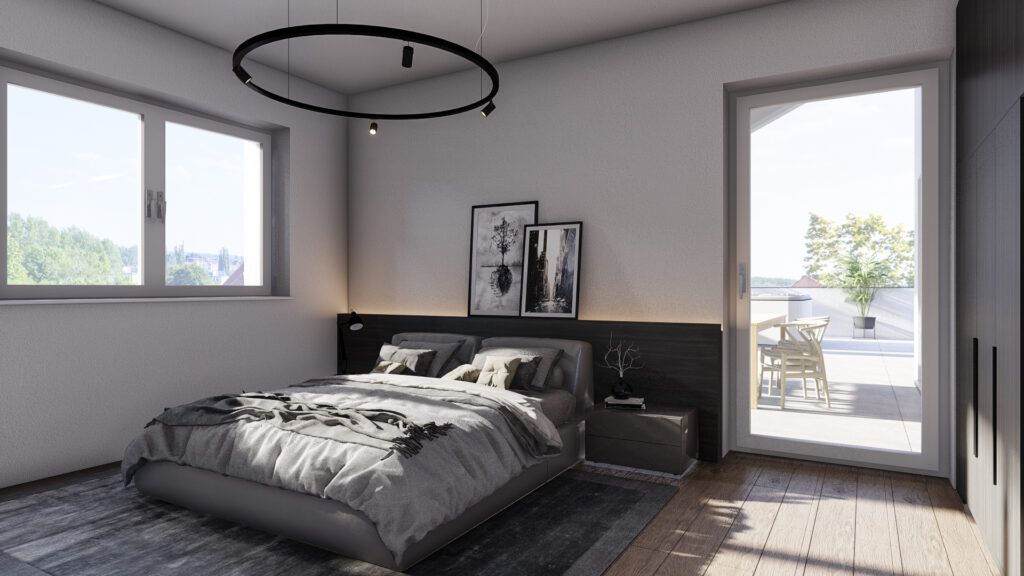The dynamics of the architectural and engineering sectors have altered for the better thanks to 3D Visualization. In recent years, 3D visualization has brought enormous efficiencies to the architectural and engineering industries. The process of creating a picture from three-dimensional data stored in a computer is known as 3D rendering.
In real life, the process is similar to snapping a photograph or recording a scene when the setup is complete. There are a variety of rendering techniques available. These approaches range from non-realistic wireframe rendering to more complex techniques such as scanline rendering, ray tracing, and radiosity.
What is 3D Visualization?
To truly grasp what 3D visualization is utilized for, we must first grasp the concept of 3D visualization .
3D rendering vs. 3D visualizing
3D rendering is the final step in the 3D visualization process. Various stages of progress make up the complete procedure. Let’s take a closer look.
What is 3D visualization and how does it work? It’s a set of talents used to demonstrate a product. Concept, modeling, materials, lighting, rendering, refining, and delivery are all part of the process. The method entails creating a realistic portrayal of a certain visual task in order to provide a clear digital image of how your product will appear in real life.
What does the term “3D rendering” mean? It’s the final step in the 3D visualization process. It’s the process of turning a computer 3D model into detailed and lifelike visuals.
The designer can generate a realistic image that can even be placed into a digital representation of an actual site using powerful illustration tools.
What are the types of 3D visualization?
Seeing such examples is a terrific approach for us to better understand 3D rendering. Please feel free to browse the sections below before returning to learn more about the 3D visualization process and its applications.
- Architectural Visualization
- Interior Rendering
- 3D Floorplans
- Product Rendering
- Virtual Reality
Understanding the process of 3D Visualization
The following approach demonstrates how to render 2D images in 3D. Despite the fact that the method is broken down into steps, a 3D artist may not necessarily follow them in order and may skip between them. Understanding the client’s vision, for example, is a continuous activity throughout a project.
#1: Comprehending your client’s vision
To create a model, a 3D artist must first comprehend the project. A 3D artist begins by envisioning the project in his or her imagination using plans, sketches, and reference photos provided by the customer. Based on the 2-dimensional blueprints, camera angles are usually decided upon at this phase.
#2: 3D modeling
To produce a digital model, the 3D artist uses specialized 3D modeling software. This step is similar to constructing a physical model’s structure, only the model is only digital. Take a look at this selection of free 3D modeling programs.
HAVE WE GRABBED YOUR ATTENTION ?
#3: Texturing and Materials
The 3D artist adds graphics to the 3D models to make them appear more lifelike. This stage is similar to painting or gluing materials and images onto a physical model. The majority of the time, there is also material setup. This refers to the options for making anything matte or glossy. Depending on the software, the artist can also change the roughness of surfaces and a variety of other factors.

#4: Lighting
To simulate real-world illumination, the 3D artist places lights in the 3D environment. This is comparable to how a photographer or filmmaker sets up lighting before filming, with the exception that the 3D artist must set up sunlight and/or ambient room lighting.
#5: Rendering
When the computer renders the 2D image or images from the scene established in the previous processes, it is known as rendering. It’s similar to shooting a photograph in the real world.
It might take anywhere from a fraction of a second to several days for a rendering to complete. The length of time it takes to render a scene is determined by the scene’s complexity and the quality required. The computer is the only one who can finish this process. In some circumstances, images are rendered using render farms, which are massive clusters of computers.
Phase drafts are sent to the client for feedback during the refinement process, usually in a low-resolution format to speed up the revision process.
The artist makes the necessary changes to the scene, texturing, and lighting until the intended outcome is reached. In general, modifications can be made independently; for example, most model changes do not necessitate updating the texturing.
The client receives the final 2D image or images that have been agreed upon. The photographs will be given in a specified format and size depending on the selected resolution. Photos on the web are usually optimized medium-size jpg files, whereas images for print are high-resolution raw files.
Let’s get to the fun part: what can rendering do for you now that you have a better understanding of how it works. You can render almost anything in 3D. Rendering is both cost-effective and practical. 3D renders allow you to see your idea before it is built or manufactured, which allows for further refinement and a better overall design. Complex simulations can be displayed using animation! Physic engines are used in today’s 3D modeling applications to simulate forces on materials. A structure under stress or a boat bouncing across waves can be depicted in these simulations. The flow of people through buildings may be simulated to determine the most efficient room or exit arrangement, and products can be appropriately sized.
Clients can also choose to be marketing pioneers by using one-of-a-kind 3D rendering software. Many developers and marketers are experimenting with virtual reality in their showrooms and websites. Customers can enjoy a more dynamic experience thanks to rendering. Furthermore, with the emergence of 3D printing, 3D models have become more practical, as your design can now be seen in the actual world. Developers may get 3D graphics and animations, as well as an actual model for their showroom, all from one provider using 3D printing.
When it comes to 3d rendering, there is a wide range of rates; why do some companies charge $100 while others charge $10,000?
Find out more about the costs of 3D Visualization!
Get mind-blowingly photorealistic 3D images with supersonic speed by contacting LX Design Studio e.U.!




work is impressive! The computer-generated imagery brings your ideas to life in a realistic and immersive way. It effectively communicates complex concepts and showcases designs. With advancements in technology, 3D visualization has become even more accessible and impactful. Keep up the great work!”
Thank you for sharing such a valuable and informative post. Your insights and tips have been incredibly helpful to me and I appreciate the time and effort you put into researching and writing this article.
Architecture is the art and technique of designing and building, as distinguished from the skills associated with construction. It is both the process and the product of sketching, conceiving, planning, designing, and constructing buildings or other structures.
There is a strong selection of well-known architecture and design blogs, but if you dig a little deeper you can come across some less publicised blogs too which also curate a depth of architectural ingenuity and design innovation.
I think 3D visualization is very cutting-edge. so technology is evolving more and more
Really seeing 3d modeling in architecture is something fascinanting. Very good article.
This post was very interesting, as it gave me a better understanding of why we should do 3d visualization as architects.
This post was very interesting, as it gave me a better understanding of why we should do 3D modeling/visualization. As an architecture student, I feel lost to understand why so much work and this post helped me a lot.
Nice environment and a modern home that fits
Indeed, it is a wonderful article. I benefited a lot from it. I did not have all these ideas regarding architecture. Thank you
Glad to hear!
This was an area where I had little knowledge.
But this article was so well explained that I was able to understand the basics, and I found it very interesting.
Thanks Marcos! you can come by for more relevant articles